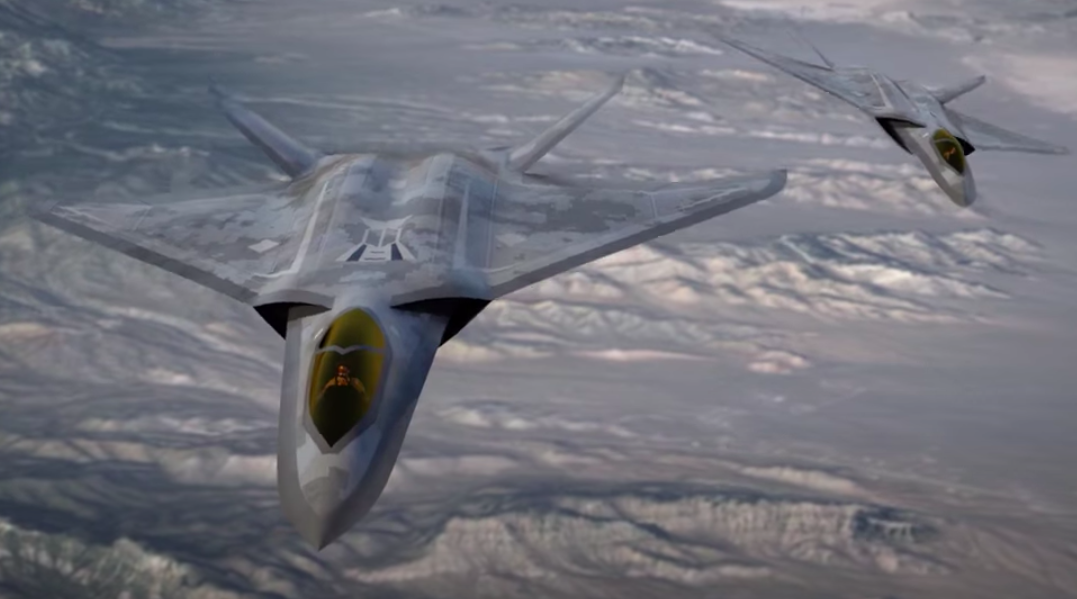
Lockheed Martin Skunk Works concept art of a sixth-generation fighter. (Lockheed Martin)
WASHINGTON: The Air Force’s sixth generation fighter has officially entered development, the Air Force’s top official confirmed today.
“We have now started an [engineering, manufacturing and development] program to do the development aircraft that we’ll take into production,” Air Force Secretary Frank Kendall said during an event at the Heritage Foundation. “We think we’ll have the capability by the end of the decade.”
Due to the classified nature of the design effort, Kendall provided few details about the manned sixth-generation fighter that is set to be the centerpiece of the Air Force’s so-called Next Generation Air Dominance family of systems, which will also feature new weapons, sensors and a variety of drones that will tag team with the new fighter.
The Air Force first flew a prototype version of the NGAD fighter 2020, but officials at the time declined to disclose information about the plane or its manufacturer.
“What we did was an experimental prototype,” Kendall said. “We basically had an X plane program which was designed to reduce the risk of some of the key technologies that we would need for a production program.”
Moving to the EMD stage more than likely means that the Air Force has coalesced around a single fighter design made by a single prime contractor, said Richard Aboulafia, an aerospace analyst with AeroDynamic Advisory.
While Lockheed Martin, Boeing and Northrop Grumman are all possible contenders to build the NGAD fighter, Northrop’s current workload producing the B-21 bomber makes it an unlikely choice to develop an advanced fighter, Aboulafia said. Far more likely, he said, is that Lockheed is leading the program, having already shepherded the stealthy F-22 and F-35 fighters from development through production.
However, Boeing could emerge as the dark horse developer of the NGAD fighter, Aboulafia acknowledged.
“There were rumors that Boeing was not out of it. And the rebuttal to that rumor is that they can prototype, but can they really build a clean sheet combat aircraft?” he said. “If it’s Boeing, it implies that they’ve achieved a miracle. That’s why I’d probably go with Lockheed Martin.”
Each of the companies have previously declined to comment on any involvement in the NGAD program. Although little information about NGAD has been released to the public, Air Force senior leaders have recently tossed a handful of breadcrumbs to hungry aviation geeks.
In April, Air Force Chief of Staff Gen. CQ Brown told reporters that the NGAD fighter’s flight control software had been decoupled from its mission system software — a feature that could allow it to be more easily upgraded with new technologies.
Later that month, Kendall told lawmakers that the NGAD fighter would cost “multiple hundreds of millions of dollars” per plane and would be accompanied by drones and other systems that are “not as expensive and give overall mission capability.” That means the cost of NGAD could dwarf that of the F-22 Raptor, which had a unit cost of about $143 million per plane, according to the Air Force.
Still, many mysteries about the NGAD fighter persist.
The Air Force has yet to describe how many NGAD fighters it plans to buy to replace the 183 F-22 Raptors currently in operation, making it unclear whether NGAD will be “the next big aircraft program” or a “boutique production program” in line with the Digital Century Series acquisition strategy proposed by former acquisition executive Will Roper, Aboulafia said.
However, the service could face an unwinnable scenario if Congress puts pressure on the program due to high unit costs, ultimately forcing it to buy too few fighters, which would then be expensive and difficult to maintain, he added.
“The complication there is that [Kendall] may need a full production program, but cost [per unit] might get in the way,” Aboulafia said.
Another big question raised by Kendall’s acknowledgement that development has started: What companies will be responsible for the engines, mission systems, sensors, weapons and other equipment inside the plane?
“The biggest implication for me if you’re bringing it to EMD is that it’s missionized,” Aboulafia said. “It’s not just a prototype [air vehicle].” That means that some integration work has likely already taken place, and an expensive new air superiority jet would likely have a huge list of suppliers, he said.
From F-16s to NATO, Argentina’s moves tilt West, but ties to China to last
There are flashpoints to watch as Argentina navigates its future between the polar attractions of Washington and Beijing, including future defense deals and a deep space facility.


























